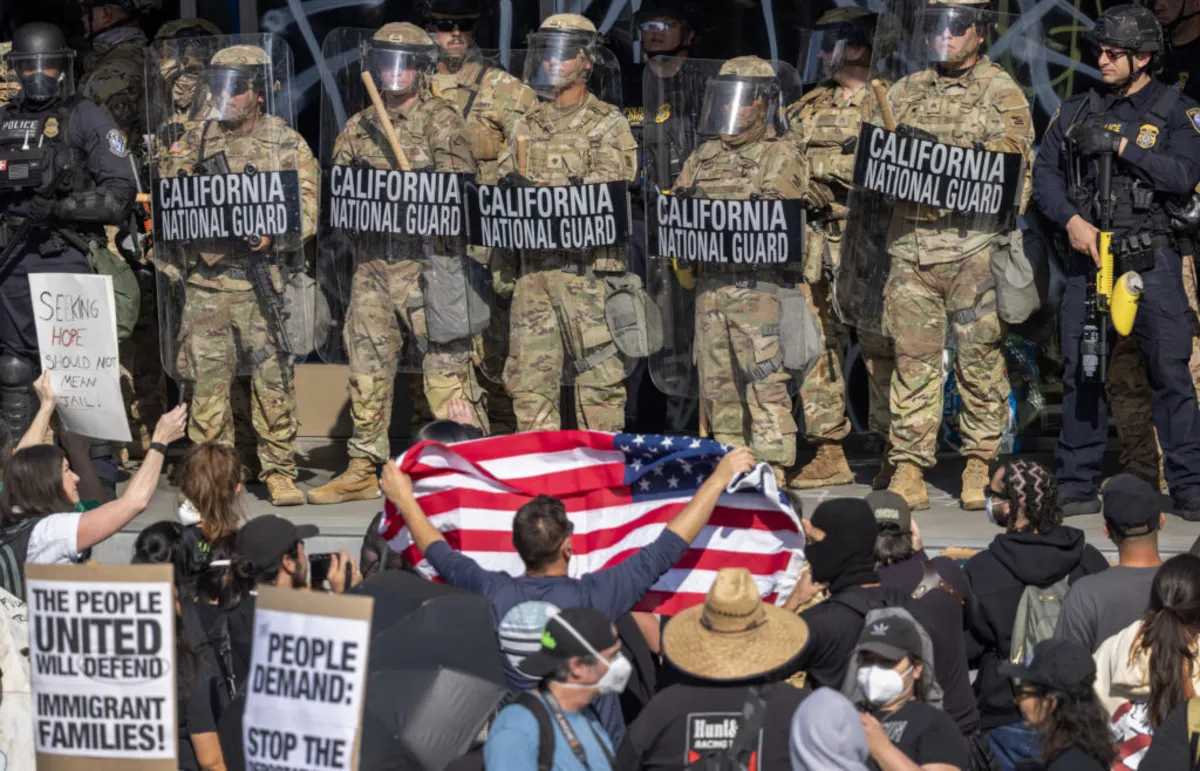
On Thursday, the 9th U.S. Circuit Court of Appeals issued a temporary block against a federal judge’s order mandating President Donald Trump to relinquish control of the National Guard troops stationed in California. This ruling comes in light of the president's deployment of these troops to assist with protests in Los Angeles, which were sparked by immigration raids. The appeals court has scheduled a hearing on this matter for June 17, just hours after the federal judge’s order was set to take effect.
Earlier on Thursday, U.S. District Judge Charles Breyer deemed the deployment of the National Guard illegal, asserting that it violated the Tenth Amendment and exceeded Trump’s statutory authority. This ruling specifically pertained to the National Guard and excluded the Marines also deployed during the protests, as they were not yet active on the streets. Governor Gavin Newsom of California had requested the emergency intervention to halt the troops from aiding in immigration raids, expressing his satisfaction with the judge's ruling. “Today was really about a test of democracy, and today we passed the test,” Newsom stated in a press conference before the appeals court's decision.
The White House reacted strongly to Judge Breyer’s order, labeling it “unprecedented” and claiming it jeopardized the safety of federal officials. White House spokesperson Anna Kelly stated, “The district court has no authority to usurp the President’s authority as Commander in Chief.” She emphasized that the president exercised his lawful authority to mobilize the National Guard to safeguard federal buildings and personnel in Los Angeles. The Trump Administration plans to challenge this ruling, viewing it as an “abuse of power.”
Typically, the authority to deploy the National Guard lies with the governors, but there are specific circumstances under which the president can assume this responsibility. President Trump federalized the California National Guard using an authority known as Title 10. This provision permits the president to deploy National Guard members during situations such as invasions, rebellions, or if he is unable to enforce U.S. laws. Judge Breyer ruled that the situation in Los Angeles does not qualify as a rebellion, stating, “The protests in Los Angeles fall far short of ‘rebellion.’”
Governor Newsom's legal action aimed to block the deployment of the National Guard against his wishes. California subsequently filed an emergency motion to stop the Guard from assisting with immigration raids. The governor argued that involving the troops would escalate tensions and increase civil unrest, despite their original deployment being intended to protect federal buildings. Major General Scott Sherman, overseeing the Guard troops and Marines in Los Angeles, reported that approximately 500 National Guard members had been trained to accompany immigration agents.
In his comprehensive ruling, Judge Breyer concluded that Trump did not properly mobilize the National Guard. The lawsuit highlighted that Title 10 mandates the president to collaborate with governors when issuing orders to the National Guard. Federal attorney Brett Shumate asserted that Trump had adhered to the statute by informing the commanding general of his decision. However, Breyer firmly disagreed, emphasizing the limitations of presidential authority, which he illustrated by referencing the Constitution.
The protests against immigration raids in Los Angeles intensified following Trump's call-up of the National Guard, with similar demonstrations spreading to other cities, including Boston, Chicago, and Seattle. The president’s characterization of the situation in Los Angeles has faced criticism from both Governor Newsom and other officials, who argue that it misrepresents the reality on the ground.